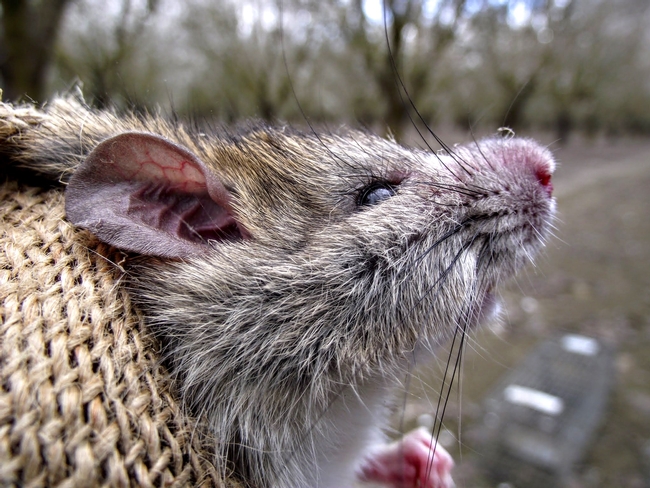
Managing rodents in and around school and community gardens can be difficult. One of the easiest ways to keep many rodents at bay is to remove their food source. Given that the main purpose of a garden is to grow food, it would be counter-intuitive to remove the food. However, there are many management options available to people working in gardens that are trying to protect their food from rat damage.
Habitat modification and sanitation
Making sure that the landscape surrounding your garden is well maintained may help with the management of rats. Lots of cover in the form of landscaped shrubs, trees, untrimmed palm trees etc. can provide a lot of harborage for rats to live in. These should be trimmed up and off the ground and should not be densely planted if they are in the area. Compost can provide ample harborage for rats. It is recommended to not compost food in the immediate vicinity of your garden and any other green waste should be attended to regularly to make sure that rats do not establish colonies in compost piles. Feeding of wildlife is illegal in the State of California. Therefore, the provision of food for any wildlife is illegal. The provision of food is not only illegal but it can also induce secondary pest problems like rodent outbreaks. The feeding of feral cats should also be strongly discouraged, particularly in areas where their feces could contaminate soils and other food.
Trapping
Trapping can be a very useful tool for the management of rats in gardens. If you have a rat problem in your garden it is important to be realistic about the number of snap traps that will be required to manage the issue. One or two snap traps will not curb a population. It is important to saturate an area with snap traps. Consider trapping at multiple levels also (inside beds, outside beds, on the ground, on fence lines etc.). Please be mindful of other community garden volunteers. It is important to let them know where snap traps are to reduce the risk of injury on encountering a snap trap. If you are working in a school, snap traps can be set in the evening and checked in the morning before the children get to the garden. Snap traps should not be set in gardens during the day when children are present unless they are secured in trapping stations that can be provided under contract from a pest management professional. Snap traps can also capture nontarget wildlife such as birds and reptiles. Please be mindful of these when setting traps. Nontarget mortality can be reduced by trapping only at night or by using trapping stations that can exclude nontarget wildlife. It is not advised to live-trap any wildlife in a garden. Once you trap a rat, under law, you must either release it right where you captured it, or euthanize it humanely.
Rodenticides
The use of rodenticides to manage rats in and around gardens is actually not considered legal. The majority of rodenticides available for purchase for unlicensed applicators are for structural use only. It is permitted to have rodenticide in gardens as long as you are using it to control rodents that are invading a man-made structure such as a shed, storage barn, or building. All rodenticides that are registered to manage rats must be applied in bait stations no more than 50ft away from the man-made structure, although some labels permit going further away (up to 100ft).
Placement of snap traps: (a) single trap with trigger next to wall; (b) the double set increases your success; (c) double set placed parallel to the wall with triggers to the outside.
Adapted from The Rat: Its Biology and Control, Howard, W. E., and R. E. Marsh. 1981. Oakland: Univ. Calif. Div. Agric. Sci. Leaflet 2896
